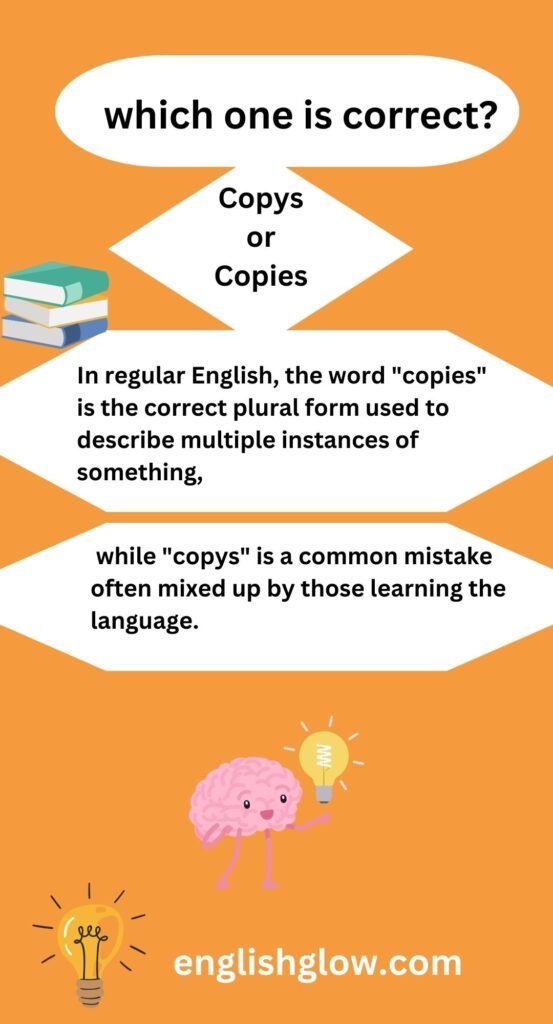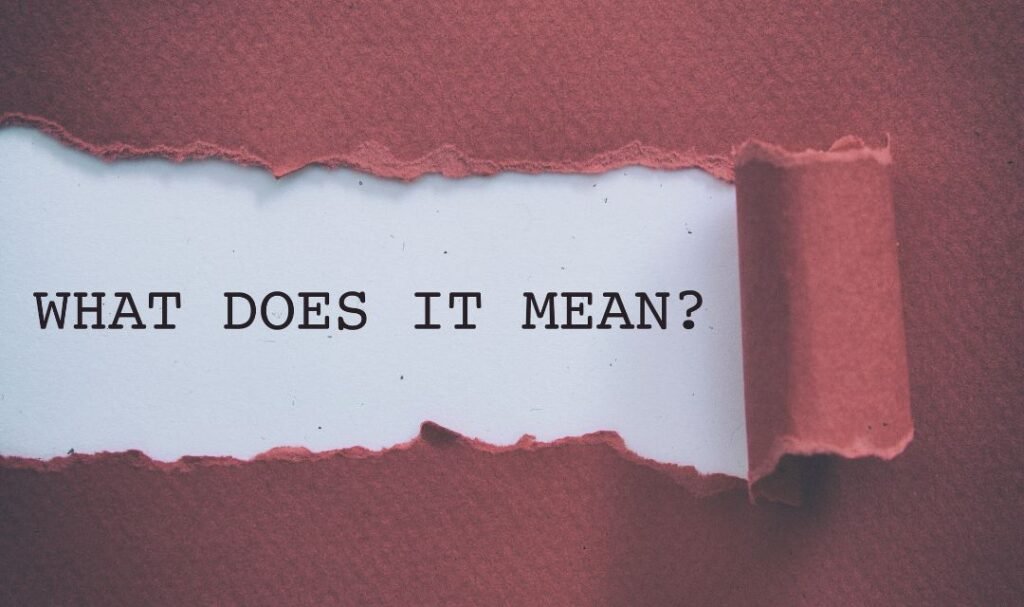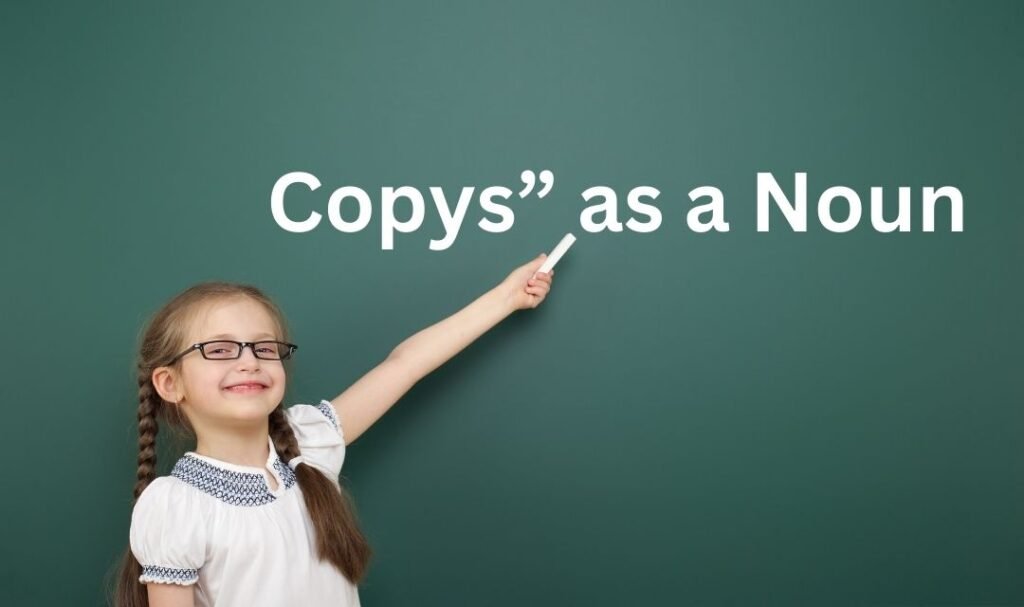In the realm of English language mastery, grasping the nuances of plural forms is indispensable for clear and effective communication. A frequent point of confusion lies in distinguishing between copies and copys. The accurate plural form of copy, particularly when referring to multiple reproductions of a document or photograph, is copies. While this distinction may appear daunting to those new to English grammar, it is a fundamental rule that profoundly enhances the clarity and professionalism of written communication.
On the other hand, copys is typically a misspelling or typographical error that can detract from the professionalism of a text and undermine the credibility of the message being conveyed. As an educator who frequently prepares handouts for students, I cannot overstate the importance of using the correct plural forms. This meticulous attention to detail ensures that academic and professional documents are not only polished but also precise, reflecting a high standard of linguistic competence.
During the writing process—whether drafting an email, composing a report, or engaging in creative writing—it is imperative to proofread and review your work thoroughly. This practice allows you to identify and rectify such errors before the final draft is shared. Effective editing and proofreading not only convey your ideas more accurately but also ensure that the finer details of your communication are appreciated without the distraction of grammatical mistakes.
which one is correct, Copys or Copies?

When we talk about creating duplicates or reproductions—whether of a document, an image, or any other item—it’s important to understand the nuances between physical and digital formats. The term copies can refer to both, capturing the idea of multiplying a single original into various forms. Imagine you have a treasured family photograph, perhaps one that has been passed down through generations. To preserve its memory and share it with loved ones, you might create several copies. These could be physical prints, carefully developed and framed, or digital copies sent effortlessly through email, bridging distances with a single click.
In standard English, copies is the correct plural form used to describe multiple instances of something. On the other hand, copys is a common misspelling, often made by those still mastering the intricacies of the language. It’s similar to the confusion between fairing and faring—small errors that can trip up even the most diligent learners. The key to using copies correctly lies in the context of replication. Whether you’re printing multiple copies of a report for an important business meeting or saving backup copies of digital files to safeguard against data loss, precision in spelling and usage is vital, especially in formal or academic settings. After all, language is not just about communication; it’s about clarity, connection, and the shared human experience of understanding one another.
Common Mistakes of Copys or Copies
In professional environments, the importance of error-free communication cannot be overstated, particularly when it involves writing and duplicating documents for distribution. The term “copies” must be used accurately and appropriately to refer to multiple instances of an object or document. This precision is vital for conveying information correctly and maintaining trust. On the other hand, the incorrect usage of “copys” often stems from a simple typographical error or a misunderstanding of standard English grammar. Identifying and rectifying such mistakes is crucial for upholding clarity and professionalism in written communication.
Moreover, the context in which “copy” is used as a verb can significantly influence the effectiveness of your message. Whether you are referring to the reproduction of physical documents or the duplication of digital files, being explicit and detailed in your explanation helps avoid confusion. Steering clear of overly complex or vague language ensures that your message is easily understood by all team members, fostering better collaboration and minimizing the risk of misinterpretation. By prioritizing clarity and precision, you not only enhance the quality of your communication but also create a more cohesive and efficient working environment.
You might also enjoy: How Is Your Day Going? Find Out What You Might Be Missing
Understanding ‘Copies’ in Various Contexts

When we think about copies, the concept generally pertains to duplicating something like a document, image, or other items to create one or several replicas. These replicas, whether digital or physical, serve numerous purposes across offices, schools, and industries. From the mundane task of creating multiple handouts using photocopiers and printers that employ light, heat, toner, or ink—each copy aims to replicate the original as exactly as possible. This capability has transformed how we share information, making it a fundamental operation in everyday business and educational activities.
Digital Copies and Intellectual Property
In the realms of publishing, entertainment, and art, the term takes on a more specialized nuance. Artists often release limited edition paintings, photos, or sculptures, each signed and numbered. These are not just copies; they are valuable and collectible. Similarly, books, music albums, and movies are distributed and sold as copies—both digital and physical. However, with this comes the responsibility of managing intellectual property rights to prevent unauthorized pirating, a significant issue in digital sharing where copyright laws are paramount.
The Confusion with ‘Copys’ and ‘Copies’
The distinction between “copys” and “copies” is a standard matter in English. “Copies” is the correct plural form when referring to multiple instances, whereas “copys” is often a mistake or typo. This confusion can lead to misunderstandings when writing accurately and effectively in professional or educational contexts. Being crystal clear in your language helps in spreading info correctly and avoids complications that could arise from incorrect usage.
Meaning of “copy”

The term “copy” encompasses a wide range of meanings, from the reproduction of a famous painting to a duplicate of a digital file. In its simplest form, a copy can be anything that replicates or imitates an original, whether it’s a facsimile of a historical document or a carbon copy of a handwritten note. This term also extends into the digital realm where it represents an exact duplicate of computer files and programs, a crucial practice for data backup and security.
In media and printing, ‘copy’ refers to the text of a news story, advertisement, or television commercial, contrasting sharply with the visual material that accompanies it. Editors send copy to printers to be reproduced in printed form, a practice that underpins much of our consumption of printed news and books. The concept of copy has evolved significantly with advancements in technology, demonstrating its adaptability and enduring relevance in both physical and digital communication contexts.
“Copy” in Grammar
The word “copy” can function both as a transitive verb and an intransitive verb, serving multiple roles in English grammar. When used transitively, “copy” requires a direct object, such as in sentences where you copy a piece of writing or data into a notebook. This action involves reproducing textbooks, letters, documents, or emails exactly as they appear. An example of this is when someone might send a copy of a letter that was also sent to someone else, such as firing off an email and copying it to the president.
Copying in Academic and Social Contexts
In educational settings, using “copy” as a verb often connotes cheating, such as when a student looks at another’s answers during a test or exam and writes down the same responses. This is exemplified in scenarios where a student like John might copy impossibly difficult algebra questions. Similarly, in social interactions, people might copy the behavior of those they admire or identify with, attempting to emulate someone they look up to by adopting similar tactics or actions.
Copy in Mimicry and Strategy
The verb “copy” extends beyond simple duplication. It involves strategic mimicry where individuals or groups might copy a successful person’s methods or ideas, like children copying admired figures or competitors in a market copying successful tactics of others. The flexibility of the word allows it to convey a range of actions, from the replication of documents to the emulation of admired behaviors and tactics, reflecting its depth in practical and metaphorical applications.
you might enjoy reading: You Won’t Believe How ‘There Once Was a Girl From Nantucket’ Ends
“Copys” as a Noun:

In regular English, ‘copys’ is often confused with ‘copies,’ but it’s important to understand that ‘copys’ is not a real word. It’s typically a mistake or typo when someone means to refer to multiple versions of a document, image, or any other object. This misunderstanding can lead to confusion in writing, where precision is crucial for proper communication. The correct term, ‘copies,’ refers to identical or similar reproductions of an original document or picture.
When conveying a message across documents or discussing replicated documents in a report, always double-check your terms to ensure that you are using them correctly. Using ‘copies’ instead of ‘copys’ helps maintain clarity and is recommended to avoid any potential misunderstandings in both casual and professional contexts. The distinction might seem small, but it can significantly affect how your writing is perceived and understood.
“Copys” as a Verb:
When talking about making copies of a document, picture, or anything, it’s common to hear the term used incorrectly. The correct verb form is “copy,” as in “to copy a document.” Using “copys” in this context is a misspelling and should be avoided to ensure clear and accurate communication. In regular English, maintaining proper grammar is essential, especially in professional or formal settings where the precision of language impacts the clarity of the message being conveyed.
Often, the mistake comes from not understanding that “copy,” the noun, and “copy,” the verb, share the same form. There is no short form or alternative spelling for the verb; “copys” is simply incorrect. Similarly, confusion may arise around verbs like “open” in the past tense, where people sometimes use “openned or opened spelling.” The correct form is “opened.” Keeping these distinctions right can help anyone become more effective in their written and spoken English, making their intentions and messages clear and easily understood.
Conclusion:
Understanding the subtle yet significant difference between “copys” and “copies” is more than just a matter of grammar—it’s about fostering clarity and precision in communication, whether in academic, professional, or everyday contexts. While “copies” stands as the correct plural form, referring to duplicates or reproductions of documents, books, photographs, or other items, “copys” is often a simple misspelling or typo. Though the distinction may seem minor, it carries weight in ensuring your message is received as intended.
In professional settings, the choice of words can shape perceptions. A small error like using “copys” instead of “copies” might seem trivial, but it can create confusion, disrupt the flow of understanding, and even cast doubt on your attention to detail. Imagine presenting a report or drafting an email—getting such basics right reflects your credibility and professionalism. It’s these nuances that elevate your communication, making it polished and reliable.
Beyond the technicalities, mastering such language skills has practical benefits. It ensures smoother interactions, whether you’re sharing reports, making requests, or engaging in business discussions. The ability to express ideas clearly and avoid misunderstandings not only enhances efficiency but also builds trust and rapport with your audience.
You might enjoy reading: How Is Your Day Going? Find Out What You Might Be Missing

